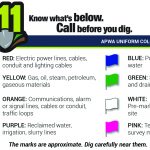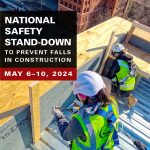
Could Your Construction Site Be an Attractive Nuisance?
Attractive nuisances can be more than just a nuisance if you find yourself faced with a lawsuit due to one. Cornell University Law School defines the attractive nuisance doctrine as:
“A doctrine in tort law under which a landowner may be liable for injuries to children who trespass on land if the injury results from a hazardous object or condition on the land that is likely to attract children who are unable to appreciate the risk posed by the object or condition.” (“Attractive Nuisance Doctrine.” LII. Cornell University Law School, 19 Aug. 2010. Web. 08 Oct. 2013.)
In other words, if a curious child were to trespass onto a jobsite and injure themselves, you could be held liable. In Pennsylvania and in other states, there are some conditions to this. In order to be held liable the following conditions must be met: the landowner must be able to foresee that children could trespass; the landowner knows, or should know, of the potential dangers; the child is young enough to not fully understand the danger; the cost to eliminate the hazard wouldn’t be an excessive burden; and the landowner doesn’t take any reasonable precautions to eliminate the hazard.
Common attractive nuisances include swimming pools, railroad tracks, farm equipment, trampolines, cell phone towers, and of course, construction sites. The big yellow machinery, the giant piles of stone and dirt, the holes and pits, all these make a construction site a large playground for unwitting children.
So how can you protect yourself from an attractive nuisance lawsuit? (Perhaps the more important question is how can you protect inquisitive children from construction site hazards?) The best plan is to analyze your jobsites, and determine where children are likely to get in trouble. Here are some common ways to prevent any accidents:
- Ensure perimeter fencing surrounds the entire jobsite. Check daily that there are no openings through which a child or other intruder could enter.
- Post Construction Area warning signs warning the public to keep out around the perimeter and at all entry points.
- Close and lock all gates when leaving the site.
- Notify local police of the jobsite and its hazards.
- At the end of each work shift, secure all materials and lock up tools and equipment.
- Do not leave keys in vehicles or construction equipment.
- Barricade trenches and excavations, and securely cover any holes or pits.
- Eliminate access to elevated fall hazard areas.
- Be sure dumpsters are kept covered/closed.
- Provide exterior lighting at night.
This list is certainly not exhaustive and shouldn’t replace proper legal advice, but by taking these simple precautions, you could avoid a catastrophe in which you could be held legally responsible.
This information is provided as a service to you by Compliance Consultants, Inc.



